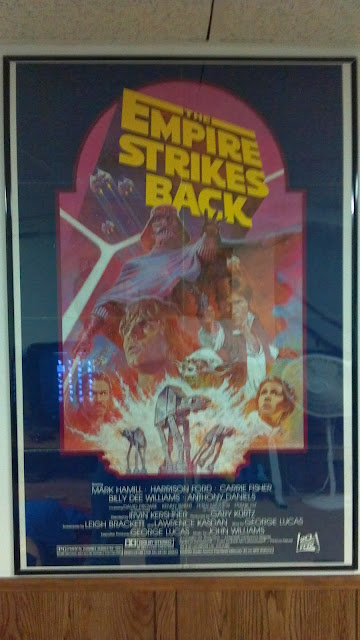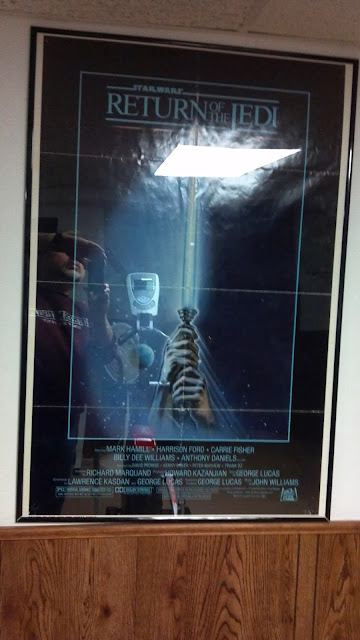[Fanzine Focus XXIV] Mörk Borg Cult: Feretory
 On the tail of Old School Renaissance has come another movement—the rise of the fanzine. Although the fanzine—a nonprofessional and nonofficial publication produced by fans of a particular cultural phenomenon, got its start in Science Fiction fandom, in the gaming hobby it first started with Chess and Diplomacy fanzines before finding fertile ground in the roleplaying hobby in the 1970s. Here these amateurish publications allowed the hobby a public space for two things. First, they were somewhere that the hobby could voice opinions and ideas that lay outside those of a game’s publisher. Second, in the Golden Age of roleplaying when the Dungeon Masters were expected to create their own settings and adventures, they also provided a rough and ready source of support for the game of your choice. Many also served as vehicles for the fanzine editor’s house campaign and thus they showed another Dungeon Master and group played said game. This would often change over time if a fanzine accepted submissions. Initially, fanzines were primarily dedicated to the big three RPGs of the 1970s—Dungeons & Dragons, RuneQuest, and Traveller—but fanzines have appeared dedicated to other RPGs since, some of which helped keep a game popular in the face of no official support.
On the tail of Old School Renaissance has come another movement—the rise of the fanzine. Although the fanzine—a nonprofessional and nonofficial publication produced by fans of a particular cultural phenomenon, got its start in Science Fiction fandom, in the gaming hobby it first started with Chess and Diplomacy fanzines before finding fertile ground in the roleplaying hobby in the 1970s. Here these amateurish publications allowed the hobby a public space for two things. First, they were somewhere that the hobby could voice opinions and ideas that lay outside those of a game’s publisher. Second, in the Golden Age of roleplaying when the Dungeon Masters were expected to create their own settings and adventures, they also provided a rough and ready source of support for the game of your choice. Many also served as vehicles for the fanzine editor’s house campaign and thus they showed another Dungeon Master and group played said game. This would often change over time if a fanzine accepted submissions. Initially, fanzines were primarily dedicated to the big three RPGs of the 1970s—Dungeons & Dragons, RuneQuest, and Traveller—but fanzines have appeared dedicated to other RPGs since, some of which helped keep a game popular in the face of no official support.Since 2008 with the publication of Fight On #1, the Old School Renaissance has had its own fanzines. The advantage of the Old School Renaissance is that the various Retroclones draw from the same source and thus one Dungeons & Dragons-style RPG is compatible with another. This means that the contents of one fanzine will compatible with the Retroclone that you already run and play even if not specifically written for it. Labyrinth Lord and Lamentations of the Flame Princess Weird Fantasy Roleplay have proved to be popular choices to base fanzines around, as has Swords & Wizardry. Another retroclone garnering attention via fanzines is Mörk Borg.
Mörk Borg Cult: Feretory—‘Feretory’ meaning ‘a portable shrine containing the relics of a saint.’ is a fanzine of a different stripe, both in terms of content and style. It is and it is not a fanzine, but it is for Mörk Borg, the pitch-black pre-apocalyptic fantasy roleplaying game which brings a Nordic death metal sensibility to the Old School Renaissance. The format is that of a fanzine, A5-sized, on matte paper rather than the gloss of the Mörk Borg rulebook, but sharing the same riotous assault of electrically vibrant yellow and pink highlights on swathes of black, abrupt font changes, and metallic embellishments. Essentially, production values higher than that typically found in most fanzines, but influential nevertheless, as seen in the recent Knock! #1 An Adventure Gaming Bric-à-Brac. This is because although the origins of the content in Mörk Borg Cult: Feretory are amateur in origin, they have been curated from submissions to the Mörk Borg Cult, the community content programme for Mörk Borg by the designers of the roleplaying game and collated into a fanzine format. And unlike most fanzines is available through distribution. It is essentially, a cross between a fanzine with gorgeous production values and a supplement with fanzine sensibilities.
At sixty-four pages and fourteen or so entries, Mörk Borg Cult: Feretory is also longer than most fanzines. Most of its articles are fairly short though and written and presented in a sparse, often bullet-point style which makes their content easy to digest. It can be boiled down to a variegated array of tables, scenarios, and character Classes, and Mörk Borg Cult: Feretory does not waste any time in getting down to its trademark doom and gloom with the first of its tables. Slipped inside the front cover, ‘The Monster Approaches’ is a quick and dirty random monster generator which with a roll of a handful of dice, the Game Master can create something vile and unnerving to throw at her Player Characters—who are of course, just as likely to be almost, if not equally as vile and unnerving. It is quickly followed by Svante Landgraf’s ‘Roads to Damnation: Travel Across a Dying World’ which provides rules and randomness for travelling across the large island which is all that remains of the Dying Lands. It covers distances as well as events on and off the road, but like all tables has only a limited number of entries, so may be exhausted fairly soon. For a roleplaying game like Mörk Borg, which is designed for short campaigns, this is not so much of an issue.
Longer is ‘Eat Prey Kill’ by Karl Druid, which can work as a companion to ‘Roads to Damnation: Travel Across a Dying World’, providing as it does rules for hunting in the Dying Lands. In effect, it is a set of mini-tables, one for each region of the Dying Lands (indicated by the often-indecipherable use of Gothic script), with each entry on the these mini-tables being a complete monster description and its stats. So in the Bergen Chrypt, a hunter might find a Tunnel Sneak (or it might find him), Nephalix Monkeys who leap from peak to peak on boney wings, tossing their victims down the cliffs below, laughing as they do, or a Ragpie, what appears to be bundle of old cloth near a pile of bones, but which embraces and chokes its victims like a dark cloak. So it is a bestiary of new creatures also, but what makes it grim is not just the table for hunting mishaps, but also what a hunter might find in the belly of the beast he is hunting…
‘d100 Items and Trinkets’ by Pelle Svensson provides exactly that, whilst Anders Arpi, Ben H, Dom Cohen, Ripley C, Johan Nohr, karl Druid, Leander E, Paul Wilde, and Flora v/d B all contribute to ‘The Tenebrous Reliquary’ which is a much lengthier and more table which contains ‘d66 Items of Doom’, including the ‘Plasmatic Idol’ which blood is spilled over it, the blood becomes a poison or the owner gains a temporary boon; a ‘Tyrant’s Tongue’, which when placed in the mouth of a skull, screams the tongue’s final words—over and over; and the ‘Claw of the Sloth’, a dagger whose small cuts can eventually freeze a victim on the spot. All of these items have a grim, dark edge to them befitting the tone of the roleplaying game. They could easily be adapted to other roleplaying games or settings with similar atmospheres. ‘The Tablets of Obscurity’ is a list of ten magical relics of a forgotten mind-cult, essentially stone tablets used like scrolls, whilst ‘The Black Salt Wind’ blows through tombs, palaces, and places deep beneath the earth, such as in the Valley of the Unfortunate Undead and the Wästland plains, its effects random each time, such as burning eyes which weep black tears encrusting the eyes or Old Salt Madness singing to you, telling to either mock or befriend everyone you meet!
Carl Niblaeus’ ‘The Death Ziggurat’ is the first of three scenarios in Mörk Borg Cult: Feretory. The Player Characters are hired by Cretun monks to climb down into a cold and dank sinkhole in the forests of Sarkash to find an ancient ziggurat and prevent a demon laying waste to the world. This is a mini-hexcrawl, set in a freezing landscape, with just a handful of locations, including the ziggurat itself, and even fewer NPCs. Combined with a set of tables to populate the sinkhole with ruins and encounters, ‘The Death Ziggurat’ is playable in a session or two and is easily added to a campaign or run as a one-shot. It also nicely tags the core concept behind Mörk Borg and that is that the world is doomed… ‘The Goblin Grinder’ by Ripley Caldwell moves the action to the city of Galgenbeck which has become infested with Goblins, with the number of its citizens affected by the Goblin Cure growing day by day. Fortunately, a local alchemist has a cure—at a cost of forty silver a vial! The scenario comes with several reasons for the Player Characters to get involved, at least initially, but not necessarily how to take the next step and get them to locations where the scenario is likely to be resolved. Once the Player Characters get to the primary location in the scenario, it is nicely detailed, grim and grimy with a certain grinding crunch to its climax. The scenario needs a little effort upon the part of the Game Master to work, but once done, this again, is playable in a session or two.
‘The Grey Galth Inn’ is not a scenario as such, but rather another set of tables for generating elements and storyhooks when at this, or another inn. So, there are tables for both ‘Would you prefer the Select Menu?’ and ‘Ah, I see, you lack funds’ (watery femur soup or thick ooze soup—ooze is pure—sound lovely), along with tables for ‘Why is the Innkeeper Twitching?’ and ‘Patron traits’. Also included is rules for the dice-based gambling mini-game called Three Dead Skulls. Of course, these tables can be used to generate content and hook the Player Characters into whatever is going on in and around the inn.
Mörk Borg Cult: Feretory includes four new Classes. These begin with Karl Druid’s ‘Cursed Skinwalker’, a shape-shifter able to assume the form of a singular creature, such as a Murder-Plagued Rat or a Doomsaying Monkey, within a bone-cracking painful minute. The ‘Pale One’ by Tim Rudluff is an alien of weird origins and manner, able to cast a random blessing once per day, but beset by incoherent madness and self-destructive rages, whilst Greg Saunders’ ‘Dead God’s Prophet’ listens to the voices in his head telling him what to do, and is blessed by his dead god, perhaps with poison-seeping stigmata or eyes of holy fire. Lastly, the ‘Forlorn Philosopher’ who studies have failed him and rails at the lies left. The ‘Forlorn Philosopher’ can freely use and understand ‘The Tablets of Obscurity’. Some of these Classes are easier to play than others, the Cursed Skinwalker’ and ‘Pale One’ in particular feeling underwritten in comparison to the ‘Dead God’s Prophet’ and ‘Forlorn Philosopher’, both of which add to the feel and atmosphere of the Dying Lands.
Included in Mörk Borg Cult: Feretory is ‘Dark Fort’, the solo game which formed the basis for Mörk Borg. It is a short, and in keeping with Mörk Borg, nasty solo game. Complete with five character sheets, a player rolls on its tables to generate encounter after encounter, the aim being for the victim/character to survive each room, collect silver, gain a Level, and so on. Once a player has ticked each of the six advancements from gaining a new Level, the character retires, lives comfortably, and just like Mörk Borg, the world ends. It is quick and dirty, even slight, but a nice nod to the origins of the roleplaying game.
Mörk Borg Cult: Feretory can add so much to your fantasy game—especially if it is dark and grim. Its content would work in Warhammer Fantasy Roleplay, Zweihänder: Grim & Perilous, Shadow of the Demon Lord, and others—with a little bit of adaptation. As a supplement for Mörk Borg it expands aspects of adventuring in the Dying Lands whilst keeping them as grim and grimy, as grisly and grotty, and as ghastly and grubby as both Game Master and players would want. Mörk Borg Cult: Feretoryy is a joyously foul and febrile first supplement, offering up a jumble that the Game Master will want to sort through and add to her game.






































